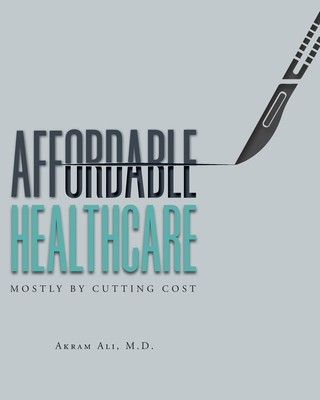| Affordable Healthcare: Challenges to Solutions Contributor(s): Ali, Akram (Author) |
|
 |
ISBN: 1525508318 ISBN-13: 9781525508318 Publisher: FriesenPress OUR PRICE: $21.59 Product Type: Paperback - Other Formats Published: October 2019 * Not available - Not in print at this time * |
| Additional Information |
| BISAC Categories: - Medical | Medicaid & Medicare - Medical | Health Policy |
| Physical Information: 0.49" H x 7.99" W x 10" (1.03 lbs) 232 pages |
| Descriptions, Reviews, Etc. |
| Publisher Description: Our healthcare system is on life support. It does not need temporary relief. What it needs is intensive therapy for a quick recovery. We need to abandon persistent past failures and current abuses to pursue a fundamentally different approach to achieve affordable healthcare for everyone. The fundamental problem of healthcare in our country is the persistently rising medical care cost. Nationally we spent $254 billion in 1980 and 3.3 trillion in 2018, a 1,200% rise in about four decades (in contrast our population increased by 32% during the same time period), and yet about 30 million Americans remain uninsured and about 25 million under insured. Those who are insured pay extra out of pocket in addition to paying high premiums and high deductibles. The medical care insurers are often blamed for rising medical care cost, although they only collect premiums from the consumers and pay the bills of the medical care providers, doctors, hospitals, drug makers and others. As the size of providers bills goes up so do the premiums of the insurers. The providers grossly abuse the system and they are accountable to no one. Here, an innovative, practical and sustainable system is presented that would control these abuses and make quality basic medical care affordable to everyone at about half the current cost. Per capita medical care cost in every state would be calculated and capped. This would not be socialized medicine nor would it be controlled by the government. This would be independent and non- profit system. It would be guided by the Central Board and managed by the State Boards. It would be overseen by the respective Senates. This plan would be pilot tested in a small state for three years prior to its application nationwide.... |